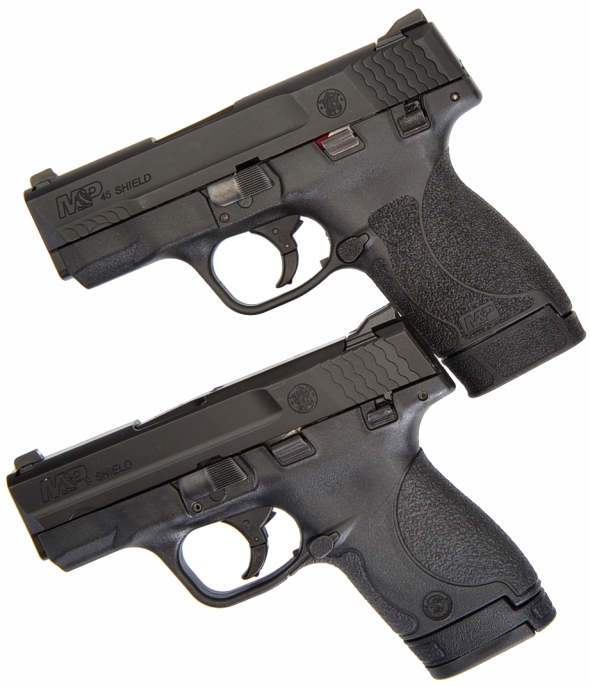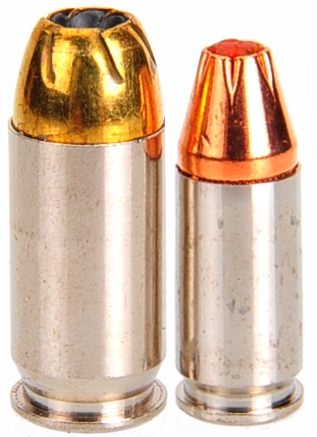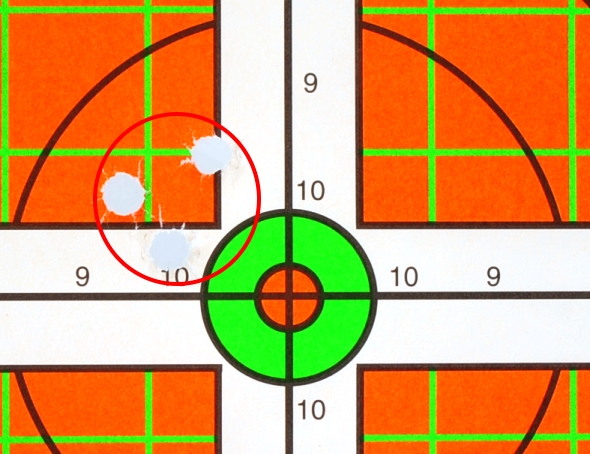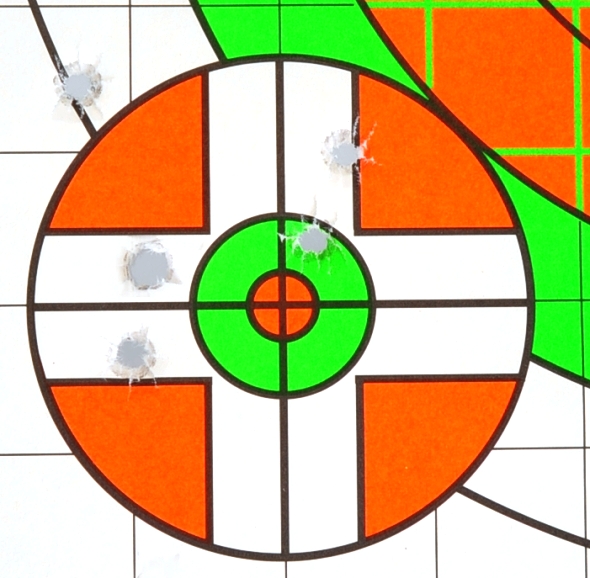
After being involved with firearms, shooting, hunting and handloading for so many years, you’d think I’d get the hang of things; pick up two pistols, feel their heft, look at the caliber and know how they will perform, how they will handle. Unfortunately, or fortunately, I am continually surprised. I would be less than truthful if I said this portion of the Shield assessment was actual work. Both pistol were fun to shoot, both behaved well and the project afforded me an opportunity to address the 9mm Luger Vs 45 Auto never ending debate.
Which is better, 45 Auto or 9mm Luger? Absolutely.

The S&W M&P Shield is intended for concealment and self defense. A standard test barrel for a 45 Auto is 5″ and that serves as the basis for factory ammunition ballistic ratings. The S&W 45 Auto Shield barrel is 3.3″ in length. The test barrel length for the 9mm Luger cartridge is 4″. The S&W 9mm Luger Shield barrel is 3.1″. Subsequently, both pistols see a reduction in velocity in comparison ammunition brand rating.
Concealment and self defense as primary applications change the basis for ammo selection. Extended range ballistics and kinetic energy considerations are replaced by terminal bullet diameter and weight and penetration in a suitable medium.
An armed engagement under life threatening circumstances in a home will not be at fifty yards, or even 25 yards. A few inches of trajectory difference at a distance are meaningless and handguns, particularly autoloaders, do not produce much of a head of steam as measured in ft-lbs. So, again, wound channel and appropriate penetration move to the head of the class.
When barrel length changes, published ammo specs no longer apply
Bullets are curious critters. Too folksy? Bullets are designed to perform within a finite criteria. Bullets of the same caliber will respond quite differently to impact when velocity varies, whether of the same or different design. A bullet designed to expand fully with an impact velocity of 1000 fps, may fragment at 1,400 fps and may barely expand at all at 800 fps. In terms of lethality, drawing upon what works for the FBI or state law enforcement is impossible if firearm types are not defined and test criteria isn’t specific. Sometimes it is best for an individual to define their objective and test accordingly.
There was a study conducted and published not long ago that was truly impressive; photography, and incredible selection of brands and types, tons of Clear Ballistic blocks lost their lives. Unfortunately, following the stated criteria, I could never come close to their results. The particular ammunition type that stood out was Remington 230 Grain brass jacketed Ultimate Home Defense. Reported as penetrating 23″, I’ve never had one exceeded 15″ to 16″ of gel penetration. Even pushing velocity only resulted in greater and more rapid expansion which left penetration about the same, 15″. My point is not to refute the test results, but only to suggest that individuals should test for themselves when possible.
|
Caliber |
Ammo | Weight Grains |
Rated FPS |
Shield FPS |
∆ FPS |
*Gel “ |
Recovered | |
| Dia. “ | Grains | |||||||
| 9mm Luger | Hornady Critical Defense | 115 | 1140 | 1066 | -74 | 12.0 | 0.539 | 114.3 |
| 9mm Luger | Hornady Critical Duty +P | 135 | 1110 | 994 | -116 | 20.5 | 0.421 | 134.0 |
| 45 Auto | Hornady Custom +P | 200 | 1055 | 937 | -118 | 14.0 | 0.636 | 200.0 |
| 45 Auto | Remington Ultimate Defense | 230 | 875 | 707 | -168 | 15.0 | 0.700 | 229.7 |
|
*Clear Ballistics 10% Gel Penetration 82°F |
||||||||
Hornady Critical Defense 9mm Luger was OK, but a bit shallow in penetration and slide velocity and subsequent muzzle jump seemed a bit more than the 45 Auto version with the ammo selected for testing. The extra bullet weight of the Hornady Critical Duty +P brought velocity down, which reduced expansion and resulted in excessive penetration. I think I might try Remington Ultimate Defense with 124 grain brass jacketed bullet as they expand reliably over a broad velocity range, hold together and the increase in weight and velocity should increase momentum for improved penetration.
The 45 Auto version did really well with two of my favorite types of ammo; appropriate penetration, excellent expansion and weight retention. The Remington Ultimate Defense in particular was very soft shooting, making it easy to double tap with consistent shot placement.

Both Shields were shot at a maximum of 50 feet, more typically 25 feet, for all the reasons previously stated. The 3/4″ three shot group below was shot at 25 feet with the 45 Auto Shield and Remington Ultimate Defense ammo. It was not a problem duplicating the same performance with a two hand, rested hold.

A two hand, unsupported grip and the 9mm Luger chambered Shield yielded repeatable 2 3/4″ five shot groups at the same distance with 115 grain Hornady ammo. None of this is a statement of the Shield’s mechanical potential, just an observation of short term results with an average shooter.

Lasting impressions…
Both the 9mm Luger and 45 Auto versions of the S&W M&P Shield pistols performed without mishap. Magazines locked in when inserted and popped out when released. Rounds chambered, empties ejected and both felt good in my hand when aiming or discharging. The sight picture was very clear, the sight radius was quite good for a relatively short barrel pistol. Neither of the M&P Shields beat up my hands. No poly frame stinging trigger fingers, no odd grip angles to keep me searching for the front sight to align with the rear. Two very good pistols and both at a very good price.

The Smith & Wesson M&P Shield 45 Auto Part 1
The Smith & Wesson M&P Shield 45 Auto Part 2

Email Notification